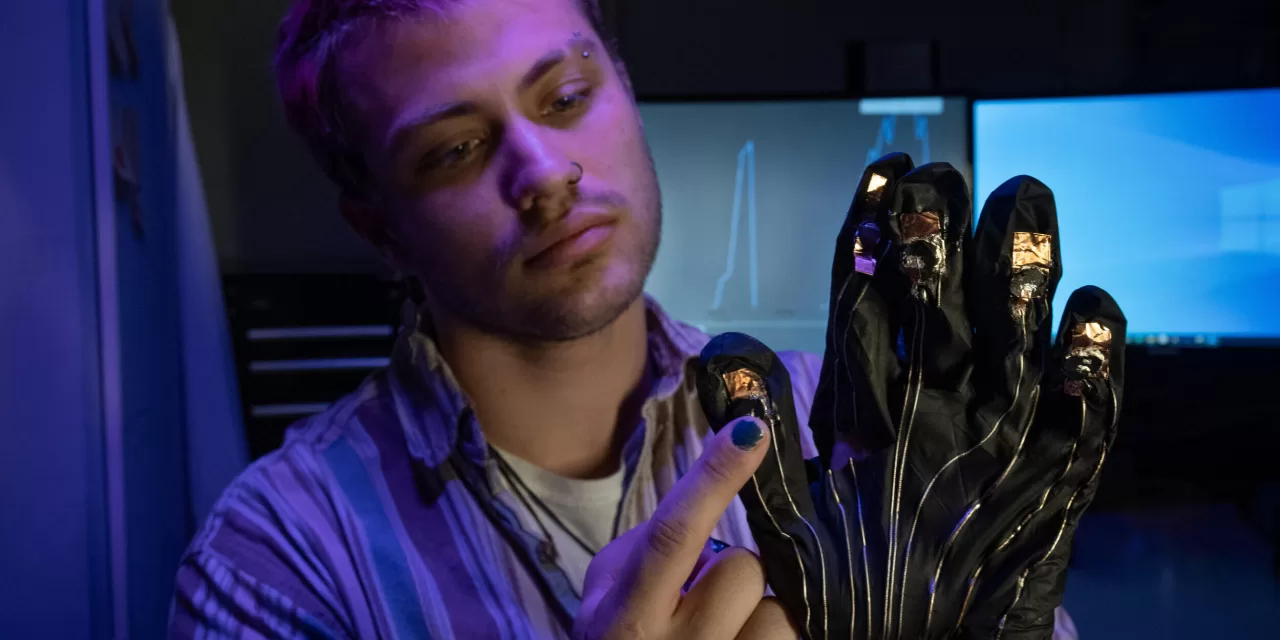A breakthrough in wearable technology developed by researchers at Virginia Commonwealth University (VCU) could revolutionize mobility for people with Parkinson’s disease. Fingernail-sized vibrating gadgets, similar to the tiny devices that make cell phones buzz, have been incorporated into flexible, wearable technology that aims to improve gait, balance, and motor control.
Innovative Technology to Combat Freezing of Gait
The technology, recently detailed in Biosensors and Bioelectronics, includes a glove and a 3D-printed shoe sole designed for Parkinson’s patients, as well as adaptations for prosthetic leg users. The system relies on pressure sensors and Bluetooth connectivity to deliver targeted vibrations, addressing a common symptom known as “freezing of gait,” which affects nearly 60% of Parkinson’s patients and impairs their ability to lift their feet.
Phillip Glass, the study’s lead author and a Ph.D. candidate in VCU’s Department of Physics, explained how Parkinson’s disease disrupts the connection between the central and peripheral nervous systems. The new technology aims to restore this communication loop through subtle vibrations that help guide movement.
Enhancing Mobility and Quality of Life
Previous research led by Dr. Ingrid Pretzer-Aboff, a co-author and professor in VCU’s School of Nursing, highlighted the potential of vibrations to aid Parkinson’s patients in regaining motor control. However, earlier prototypes were considered bulky and uncomfortable. The latest devices, developed with 3D printing, offer a more flexible and lightweight solution, featuring multiple small vibration devices rather than a few large ones.
“When patients take a step or grip an object, pressure sensors trigger vibrations on another part of their body, alerting them to the movement,” said Dr. Pretzer-Aboff. “This not only provides physical cues but may also have neurosensory benefits by stimulating receptors in the skin and relaying feedback to the brain.”
A Versatile and Adaptive Solution
The researchers have also designed the system to assist individuals who use prosthetic limbs. A prototype for prosthetic leg users can detect pressure imbalances and send signals to vibration devices on the upper leg, potentially preventing falls. The rechargeable, battery-powered system allows users to adjust the amplitude and frequency of vibrations based on their needs.
Beyond medical applications, the technology has broader potential. Brent Fagg, assistant director for innovation at VCU TechTransfer and Ventures, suggests that the solenoid-based system could be used in professional athletic training gear to provide real-time performance feedback.
Future Prospects
The team is currently working with VCU TechTransfer and Ventures to obtain a patent and explore commercialization opportunities. Their ultimate goal is to transition from prototype development to market-ready wearable products that can significantly enhance mobility for those affected by Parkinson’s and other peripheral nervous system impairments.
“We aimed to identify the problem and develop a practical solution,” said Dr. Daeha Joung, senior author and assistant professor of physics. “As scientists and engineers, our mission is to help patients regain independence and confidence in their movements.”
Disclaimer
This article is based on research findings and is intended for informational purposes only. It does not constitute medical advice. Individuals with Parkinson’s disease or other mobility impairments should consult with their healthcare providers before considering new treatment options.











